
Attribution: College Matchpoint.
- Subject:
- Higher Education
- Material Type:
- Reading
- Author:
- Aujalee Moore
- Date Added:
- 05/20/2024

Attribution: College Matchpoint.

It is important to know you are not alone; barriers to equity have long histories and one person cannot dismantle them. Challenging oppression means building relationships that heal and equipping people with the tools and understandings needed to take a stance about who they are in collaboration with others.

Join Aujalee Moore (ODE), Debra Fitzgibbons (OTAP), Linda Brown (ODE), and Michael Cantino (BVIS) for shared learning about accessibility and instructional materials in Oregon K-12 schools.

Handout that contains the "Anatomy of a Resume" and notes.

On the blocks of the Jenga game, the teacher will write different career-related questions for students to answer. These questions should help students further explore Career Education curriculum Goals and Outcomes.This game can be played different ways, be creative!

A Career Readiness Workshop is a Career Exploration experience on the continuum of Career Connected Learning. These workshops bring together students and industry professionals to take part in career readiness activities. Students network with professionals, take part in mock interviews, and generally build their confidence and skills related to interactions with potential employers. These events are a great way to help prepare students for meaningful and effective interactions with professionals. Industry professionals with an interest in supporting the talent pipeline and increasing the number of highly qualified young people in their local community also benefit greatly from a Career Readiness Workshop. At a typical Career Readiness Workshop -- which often includes dinner and networking-- industry representatives lead students through three interactive workshops over a three-hour period: Delivering an Elevator Pitch, Resume Best Practices, and Interview Strategies. This helps students develop a skill set to market the STEM skills they’ve attained through their studies. The event also gives opportunities for students and professionals to informally interact and network during dinner and after the workshops.

What is a cover letter? Use this handout with students to teach them Dos and Don'ts

Slides that can be used to teach about cover letters in a workshop style.

Presentation on communication in the workplace.

This professional learning series was developed in partnership by the Oregon Department of Education's Office of Education Innovation and Improvement and WestEd. The series is designed for participation in teams, PLCs, or other groups, and also available to individuals. Access the content through a public Canvas course, or import the modules into your organization's Canvas LMS.
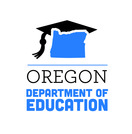
Throughout the 20th and early 21st centuries tribal nations and Indigenous communities have continued to assert their right to self-governance and sovereignty despite numerous efforts to force them to assimilate. By extension, the purposeful erasure of Indigenous peoples as a living and thriving presence in the current, modern-day world also remains a reality. Tribal sovereignty predates the existence of the U.S. government and the state of Oregon. Tribalgovernments are separate and unique sovereign nations with the power to execute their self-governance to protect the health, safety, and welfare of their citizens and to govern their lands, air, and waters. One of the ways Indigenous communities have been embodying their right to sovereignty is through the establishment of an Indigenous Peoples’ Day. Indigenous Peoples’ Day serves as a reminder of the contributions, both past and present, of Indigenous communities and tribal nations. In this lesson, students will explore the concepts of tribal sovereignty and self-determination and learn about efforts by tribes and other entities to promote and support the celebration of Indigenous Peoples’ Day. This lesson is meant to be used with its companion lesson: Indigenous Peoples’ Day as an Act of Sovereignty Part II.

Throughout the 20th and early 21st centuries tribal nations and Indigenous communities havecontinued to assert their right to self-governance and sovereignty despite numerous efforts to forcethem to assimilate. By extension, the purposeful erasure of Indigenous peoples as a living and thriving presence in the contemporary world also remains a reality. Tribal sovereignty predates the existence of the U.S. government and the state of Oregon. Tribal governments are separate and unique sovereign nations with the power to execute their self governance to protect the health, safety, and welfare of their citizens and to govern their lands, air, and waters. One of the ways Indigenous communities have been embodying their right to sovereignty is through the establishment of an Indigenous Peoples’ Day. Indigenous Peoples’ Day serves as reminder of the contributions, both past and present, of Indigenous communities and tribal nations. This lesson extends the knowledge gained from Part I by asking students to make meaning of Indigenous Peoples’ Day and to explore how advocacy leads to a local proclamation and change.

The Lewis and Clark Expedition of 1804–1806 was of great consequence for the developing United States, the future state of Oregon, and the Native American people who had been living in the American West for thousands of years. The passage of time, mythmaking, and selective interpretation have obscured or distorted both minor and major realities about the purposes of the expedition, the people involved, and its impact. As is said, every story has (at least) two sides, and until recently the Native American point of view has rarely been heard. In this lesson, students will learn about primary and secondary sources, as well as point of viewand bias and the impact they can have on the intention behind the recording and retelling ofhistory.
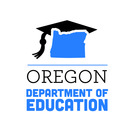
The Lewis and Clark Expedition of 1804–1806 was of great consequence for the United States, the future state of Oregon, and the vast numbers of Indigenous people who had been living in the American West for thousands of years. The passage of time, mythmaking, and selective interpretation have obscured or distorted both minor and major realities about the purposes of the expedition, the people involved, and its impact. In this lesson, students will explore how historical events can be viewed and interpreted differently by different people, and why some stories about historical events can dominate or exclude others. These occurrences in the historical record were often intentionally organized and supported to present a narrative that was favorable to one side over another. Students will also learn details about the Lewis and Clark Expedition that provide a fuller picture of Native American contributions to the journey and its long-term impact on Indigenous people, specifically in Oregon. This lesson can be incorporated into elementary Oregon history units and/or provided as an extension. It assumes that students are already familiar with the general outline and key people of the Lewis and Clark Expedition.
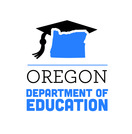
This lesson explores the concept of survivance in contemporary Native American culture, particularly as it relates to the nine federally recognized tribes of Oregon. The term survivance is unfamiliar to many people, but in recent decades it has become an important way of talking about how Indigenous people express and carry forward their cultural identities and traditions in contemporary life. Acts of survivance are those that demonstrate the ongoing and dynamic presence of Indigenous people in contemporary times. These acts of sovereignty and self-determination can take many forms, including tribal efforts to revitalize a language or open a new business; a Native student winning a scholarship or achieving public recognition; or a cross-tribal group advocating for land, treaty, or fishing rights. News media outlets, in a variety of forms, are one of the ways the nine federally recognized tribes in Oregon attempt to both inform and communicate with tribal members and the general public about current events and tribal participation in local, state, and national events. Each of the nine tribal nations in Oregon produces its own unique news outlet that is available to all tribal members. Many of these are also available to the general public. The purpose of this lesson is to provide students with the opportunity to identify examples of survivance in action—through the reading analysis of tribal news outlets.
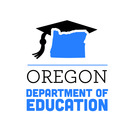
This lesson introduces students to two of the most important aspects of Native American culture, both past and present: oral storytelling and the role of elders within tribal communities.Tribal nations and Indigenous communities in Oregon are varied and have multiple unique languages, world views, ways of life, and traditions. Like most cultures, they have many ways they communicate, preserve, and pass on their cultural and ceremonial traditions to future generations.One of these ways is through oral tradition, in which information is passed down through the generations by word of mouth. There are many forms of oral tradition, including poems, songs, speeches, choreography, and spoken word. One of the most well-known forms of Native oral tradition is storytelling. Western oral tradition is often divided into categories of folktale, myth, and legend. Tribal nations do not make this distinction and simply say “stories” or “teachings.”
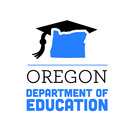
Elizabeth Woody is a poet and educator of Navajo, Wasco, and Yakama descent and is an enrolled tribal member of the Confederated Tribes of Warm Springs. Woody’s writing focuses on the histories of her ancestors, the rich Pacific Northwest landscape, and the experience of being a tribal member, an American, and a woman in contemporary society. Woody is the winner of the American Book Award. In 2016, she was named the eighth poet laureate of Oregon—the first person of American Indian heritage to hold that honor. Oregon poets laureate are appointed by the governor and serve a two-year term as cultural ambassadors, traveling around the state to share the power of reading and writing poetry. In this lesson, students will explore and analyze Woody’s poetry. Students will have the opportunity to listen to Woody speak about her work and her relationship with language and the landscape. They will reflect on and discuss her perspective and the process by which she writes. Students will also learn a structured strategy for analyzing poetic text and recognizing key themes. Finally, students will demonstrate what they have learned by creating a group analysis and presentation of one of Woody’s poems.

This lesson introduces students to the history and importance of the Indigenous language known as chinuk wawa. Students will have the opportunity to learn how tribes from diverse regions and language families used chinuk wawa as a method of communication among groups essential for trade, political, social and other reasons. They will also reflect on the power of language and the relationship between language and cultural identity.

The English Learner Scaffolds for PBL document provides strategies and recommendations to support English Learners during each phase of a project. It includes guidance on scaffolding the project process, content learning, and language development. The recommendations here align with the planned scaffolding strategies from the Theoretical Foundations and Research Base for California’s English Language Development Standards, provided at the end of this document.Use this to help plan scaffolding for a project to meet the needs of your EL students.

The Essential Project Design Elements Checklist can be used for a quick evaluation of a project's design, to see if it includes all the essential elements of rigorous, effective PBL.This checklist is a user-friendly tool, and based on our Project Design Rubric.Use this tool before, during, and after designing projects to check on their quality. Also helpful for communicating the meaning of PBL to various audiences.